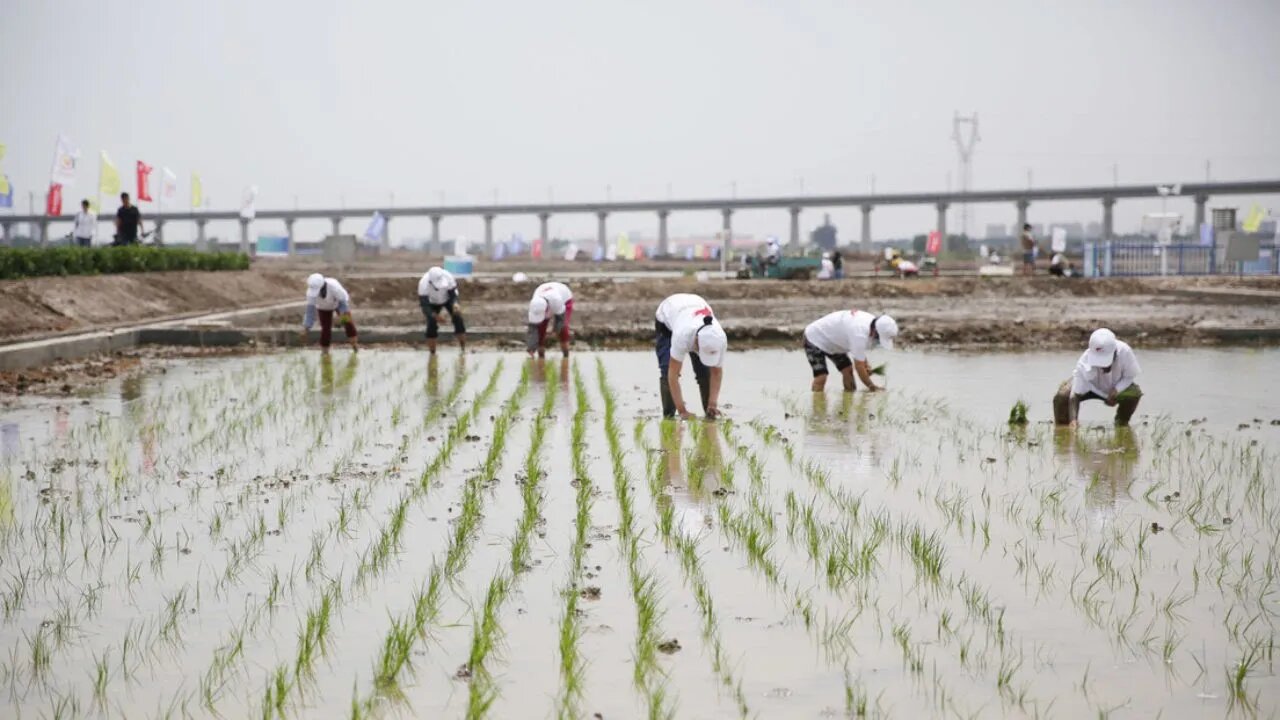Premium Only Content

Seawater rice or saline-alkali tolerant rice: The future of food security
China is home to 100 million hectares of wasteland – that's an area the size of Egypt – where crops cannot grow due to high soil salinity or alkalinity. For decades, the Chinese government and scientists have made great efforts to improve soil quality, and now, hope is on the horizon. A hybrid crop called "saltwater rice" is able to grow and yield in various saline-alkali soils, including tundra and dessert.
Many places across China have launched a new round of saline-alkali tolerant rice - or better known as "seawater rice" - transplanting this week, aiming to increase output as the country strives to ensure food security amid an increasingly uncertain global food market.
The domestic planting area of "seawater rice" surpassed 600,000 mu (40,000 hectares) by the end of 2021, and it is projected to exceed 1 million mu in 2022, the Qingdao Saline-Alkali Tolerant Rice Research and Development Center told the Global Times.
----
*** The species of rice are transplanting can grow in saline water with concentrations of eight per 1,000, and its output per mu can reach about 450 kilograms, about half of the regular rice output. Even though the output of saline-alkali tolerant rice is low, it is better than having nothing produced from "wasted" land.
-
 2:26:32
2:26:32
BooniesHQ
3 hours agoGame Of SKATE Shaun Hover Vs. Jeff DeChesare: Boonies Skate Night 1
78.5K1 -
 17:08
17:08
Exploring With Nug
23 hours ago $1.02 earnedMassive Thunderstorm Hits During Search for Missing Georgia Woman!
7.08K -

Sgt Wilky Plays
1 hour agoRumble Gaming Bad Company Presents WARZONEPALOOZA
6.64K -
![Devin Nunes - Devin Nunes Reveals The Document The [DS] Was Looking For Was Hidden,Truth Is Coming](https://1a-1791.com/video/fww1/20/s8/1/-/e/L/d/-eLdz.0kob-small-Devin-Nunes-Devin-Nunes-Rev.jpg) 1:17:44
1:17:44
X22 Report
8 hours agoDevin Nunes - Devin Nunes Reveals The Document The [DS] Was Looking For Was Hidden,Truth Is Coming
111K108 -
 LIVE
LIVE
GritsGG
8 hours agoRumble Customs! 3515 Ws! 🫡!
142 watching -
 3:56:15
3:56:15
BigTallRedneck
4 hours agoREDD CONQUERS WARZONEPALOOZA
1.68K -
![[LIVE] WARZONEPALOOZA | Team: Helljumpers | #RumbleGaming #RumbleTakeover](https://1a-1791.com/video/fww1/a8/s8/1/G/N/O/d/GNOdz.0kob-small-LIVE-WARZONEPALOOZA-Team-He.jpg) 3:03:22
3:03:22
Joke65
3 hours ago[LIVE] WARZONEPALOOZA | Team: Helljumpers | #RumbleGaming #RumbleTakeover
1.52K -
 3:42:37
3:42:37
Illyes Jr Gaming
6 hours agoIt's WARZONEPALOOZA!
1.14K2 -
 LIVE
LIVE
The Sufari Hub
1 hour ago🔴LABOR DAY LIVE - SUFARI TAKES ON HELLDIVERS 2 - FOR DEMOCRACY!
13 watching -
 LIVE
LIVE
CassaiyanGaming
4 hours agoWARZONE PALOOZA - Rebirth with Cassaiyan, HannibalLecter, and DudeBroDude
21 watching